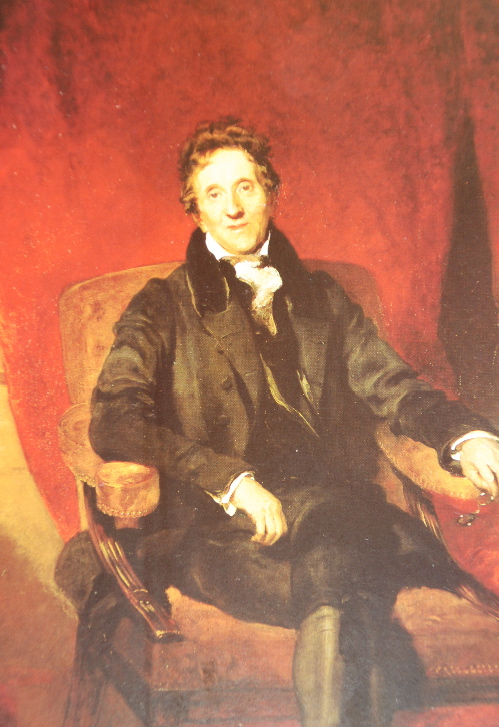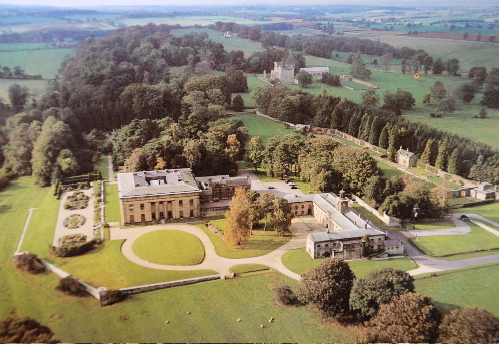This is John Soane. He is an aboriginal of the British Isles.
A few years ago I was in England for the first time, and I thought a bit about belonging to a land and a landscape. My ancestors all came from England to Australia at various times in the past. Australians speak English, it is our mother tongue. But if you pick up a volume of poetry by any number of celebrated and dead poets who write in this language you’ll find poems with titles like ‘May Morning’ or ‘June Day’. When you come from Australia and pick up John Clare’s poem ‘July’ and read the first line – ‘Loud is the summer’s busy song’ – then you feel a strong sense of incongruity with your own experiences. In Australia July is the middle of winter and noon doesn’t ‘burn with its blistering breath around’, it is actually pretty cool (Peter Porter has commented on this in a poem about reading Midsummer Night’s Dream).
So Australia obviously needs its own literature of nature, and we have a bit of it, here and there. But my point is that the English landscape does have a small influence, through the circuitous route of English literature, on life in Australia.
Anyway, when I was in England a few years back I got interested in the kind of aesthetic sense expressed by people people like John Soane. Soane’s house is open to the public as a museum in London, and shows the visitor what the nineteenth century English gentleman with an interest in architecture could do to make a pleasing environment. Beyond that I went out into the country and entered the world of the English country house and its estate. Despite the lamentable political circumstances associated with the creation of such places hundreds of years ago, I found myself pleased and calmed by the order and beauty to be found in some of these houses and their woods and gardens.
This is a postcard I have of Belsay Hall, a property run by English Heritage (the British government), one of the most beautiful of all country houses. It is in Northumberland, and the quarry where the stone for the house was taken from was turned many years ago into a sunken garden, which winds under the canopy of overhanging trees.
I normally are much more interested in wilderness than planned gardens, but this winding walk through the limestone walls and ravines is enough to make me feel some affinity with the great tradition from the 18th and 19th centuries of English landscape gardening.
Soon I was doing a couple of weeks voluntary work for the National Trust. I stayed at Felbrigg Hall and worked, along with a bunch of around twenty other volunteers, at Blickling Hall, in Norfolk. In the evenings all the tourists had left the area, and I wandered about the place. It was a warm evening at the end of May, and I was sitting in the walled garden by myself, watching the doves flit around the tall dovecote and listening to their soft coos. I got up and walked through the gardens behind the house to the orangery and breathed in the thick aroma of the many camelias kept in there. With moments like these, why, I asked myself, don’t more English people volunteer to do this kind of thing?
At one point I found myself opening up the pyramid shaped mausoleum in the middle of the woods at Blickling. The door to the mausoleum is made of iron and weighs a ton. I fitted the old iron key to it and swung it open, a slow, sepulchral creek echoing inside the tomb. I thought of what kind of person John Hobart must have been to have wanted a pyramid in the middle of the woods to be his tomb. Did he really felt he belonged to England? Then I left this musty resting place and walked into the woods around the pyramid. I saw a barn owl fly above me and across to a nearby tree. It landed and watched me. I sat down for a minute and watched it. I kept walking and deep in the woods I found the old deer ditches that bordered the medieval park, now green and leafy dingles. I could hear buzzing, rustling, hooting and scurrying around me. There was the smells of the forest, the wind on my face and the soft earth under my feet. Tall trees rose from the sea of purplish blue bells in front of me.
I’ve never been there, but I just noticed on the National Trust website that Wallington, another estate with lots of woods, this time in Northumberland, has an opening for volunteers this May. If I was in England, I’d do it. The great thing isn’t just helping out with running the gardens, but is being able to wander around the place when all the day trippers have gone home.
Australia has a lot more original wilderness and previously undescribed species of life still kicking around, and I feel a strong sense of belonging on this southern land. On the other hand I can’t help feeling like an aboriginal when I’m treading along under ancient silver beeches.

